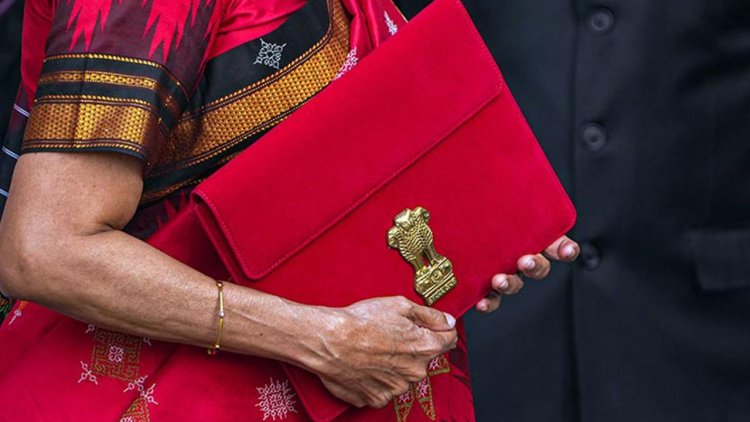As India commemorates 77 years of Independence, the evolution of its budgeting policies reveals a journey toward economic transformation and financial sovereignty.
This journey, marked by phases of nation-building, liberalisation, and inclusive growth, offers valuable lessons not only for India, but also for other emerging economies.
The pre-1990s period
India's post-independence era was characterised by the formidable task of nation-building and laying the foundation for infrastructure and industrial growth. The adoption of a mixed economy model, with the state playing a central role, mirrored the strategies of other newly independent nations like Indonesia and Egypt, which also sought to assert economic independence through state-led development.
The introduction of the Five-Year Plans was aimed at structuring economic development, emphasising agriculture, industrialisation, and poverty alleviation. These policies were similar to those adopted by countries like South Korea, which also prioritised state-led industrialisation during its early years.
The 1970s marked a period of structural change, with India’s Green Revolution dramatically increasing agricultural productivity and ensuring food security. This era saw budgets prioritising rural development and poverty reduction, much like China's focus on agricultural reform during the same period.
India's decision to nationalise banks in 1969 and its tilt toward socialist policies reflected a broader trend in the developing world, where many countries sought to assert control over key economic sectors. However, by the 1980s, India, like many Latin American countries, faced fiscal challenges, including rising deficits and public debt.
This period underscored the limitations of heavy state control and foreshadowed the need for economic reform.
Economic liberalisation and global integration since the 1990s
The economic crisis of 1991 was a turning point for India, leading to the adoption of liberalisation, privatisation, and globalisation (LPG) policies. This shift was similar to the market-oriented reforms undertaken by other emerging economies like Brazil and Russia, which also faced economic crises and moved towards liberalisation during the same period.
The 1991 budget under the leadership of prime minister P.V. Narasimha Rao and presented by finance minister Manmohan Singh, initiated reforms that reduced fiscal deficits, liberalised trade, and encouraged foreign investment. These policies played a crucial role in integrating India with the global economy, much like the reforms in Southeast Asia that spurred rapid economic growth.
The early 2000s saw India emerging as one of the world’s fastest-growing economies. Budgetary policies during this era were oriented towards sustaining high economic growth, improving infrastructure, and fostering technology adoption. At the same time, budgets continued to address social equity through programmes like the National Rural Employment Guarantee Act (NREGA) and the Right to Education Act.
These initiatives were aimed at ensuring that economic growth translated into broader socio-economic development, reducing poverty and improving living standards. The budgets since 2014 under the leadership of Prime Minister Narendra Modi focused on balancing growth with sustainability.
Reforming various aspects of economic legislation ranging from taxation to dealing with insolvency to easing of doing business to promoting self-reliance has been the hallmark of the budgets of the past decade. The introduction of the Goods and Services Tax (GST) in 2017 was a landmark reform, simplifying the tax structure and creating a unified national market. This reform mirrored the tax and market reforms undertaken by China in the late 20th century, which were crucial in its economic rise.
The Covid-19 pandemic posed unprecedented challenges, prompting budgets focused on economic revival, health infrastructure, and social safety nets. It is heartening to note that buckling the trend of generous expansionary budgets of the developed economies, India pivoted its own path of careful and yet targeted spending. The Atmanirbhar Bharat initiative emphasised self-reliance, particularly in critical sectors like manufacturing and technology, a strategy that resonated with other emerging economies such as Vietnam, which has focused on strengthening domestic industries in response to global disruptions.
An interesting piece of trivia is that while former finance minister Morarji Desai holds the distinction of presenting a total of 10 budgets, Finance Minister Nirmala Sitharaman has set the record for delivering seven consecutive budgets.
Looking ahead: Path to 2047
As India aspires to become a five trillion-dollar economy, future budgets will need to focus on enhancing global competitiveness, fostering innovation, and ensuring that economic progress benefits all sections of society. Further, the sanctions imposed by the US and European nations on Russia provide key financial lessons for India, especially in terms of economic resilience, cybersecurity, strategic autonomy, and the importance of a diversified global presence.
India’s budgeting journey over the past seventy-seven years reflects its dynamic economic evolution and pursuit of financial sovereignty. By learning from its past and drawing insights from other emerging economies, India’s future budgets can lay the foundation for becoming a developed nation by 2047, ensuring that growth is sustainable, inclusive, and globally competitive.
- Tags:


0 Comments:
Comments